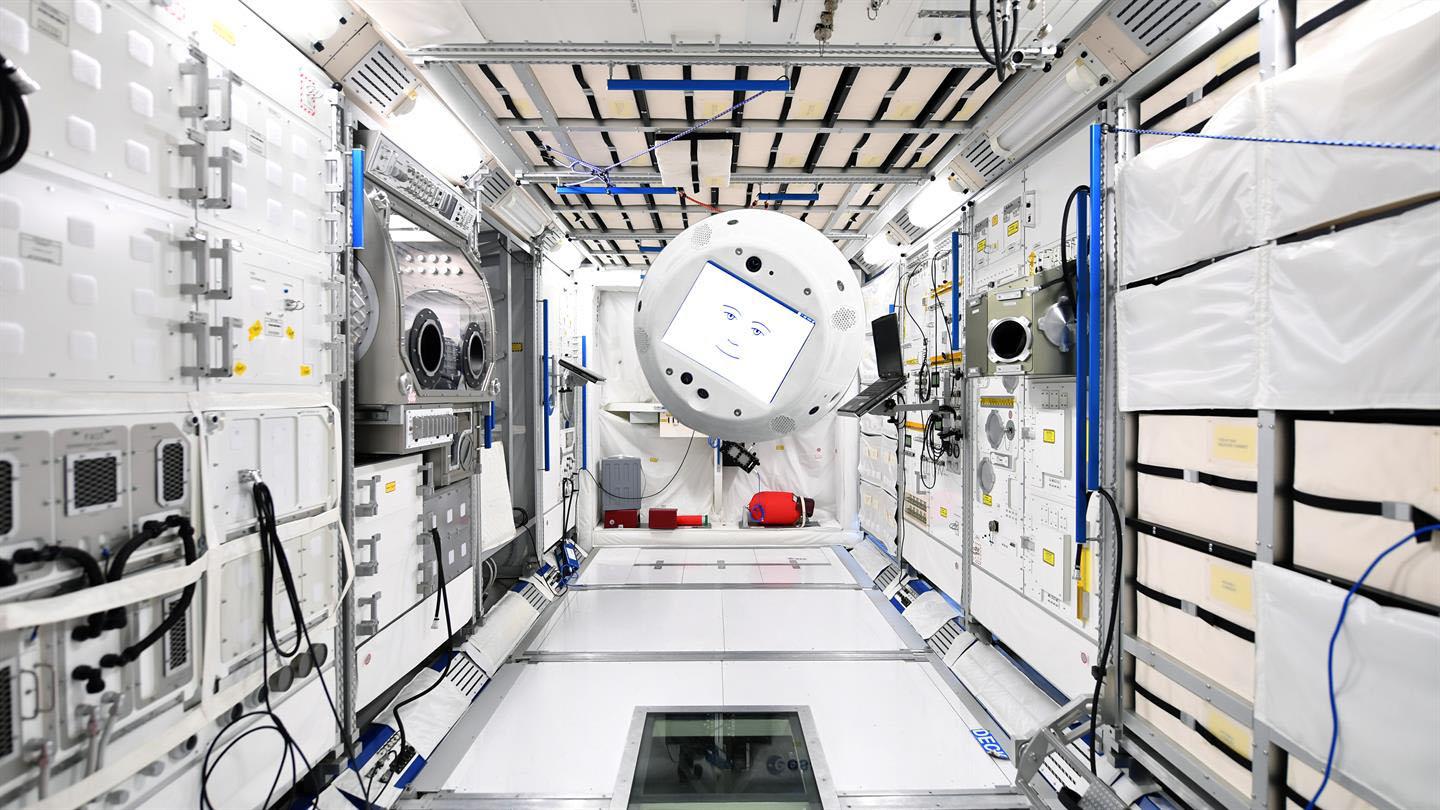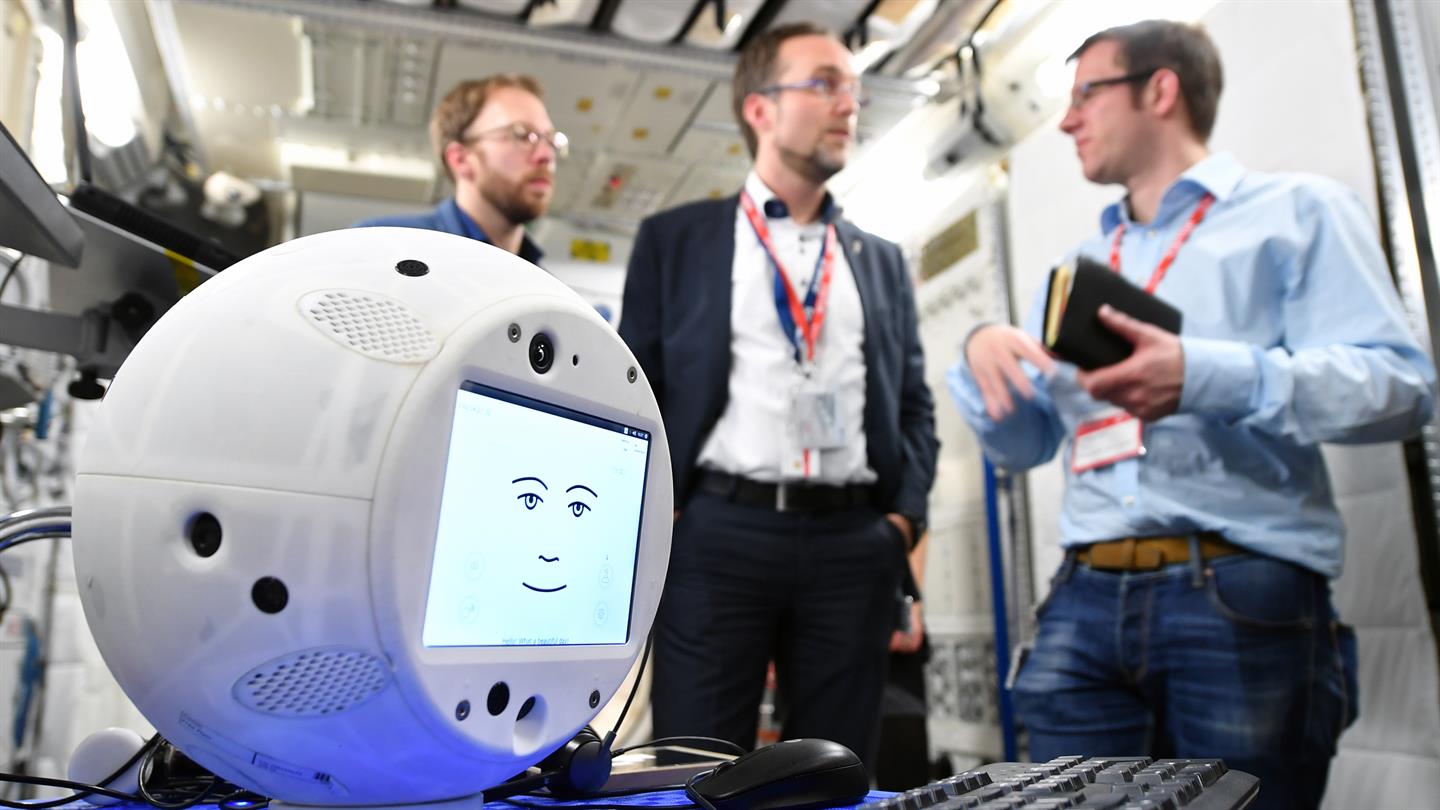
A beautiful space-exploration friendship between human and machine may have just begun.
Early this morning (June 29), a small robot endowed with artificial intelligence (AI) launched on a two-day trip to the International Space Station aboard SpaceX's Dragon cargo capsule. No other AI-equipped machine has ever flown to space before, project team members said.
The mission of the bantam astronaut assistant — known as CIMON, short for "Crew Interactive Mobile Companion" — is relatively short and modest. But its work off-Earth could help pave the way for some pretty big things, according to NASA officials. [Real-Life 'Replicants': 6 Humanoid Robots Used for Space Exploration]
"Having AI — having that knowledge base and the ability to tap into it in a way that's useful for the task that you're doing — is really critical for having humans further and further away from the planet," Kirk Shireman, NASA's International Space Station (ISS) program manager, said during a prelaunch news conference yesterday (June 28).
"We have to have autonomy," he added. "We'll have to have tools like this to have the species successfully live far away from Earth."
A smart flying sphere
CIMON was developed by the European aerospace company Airbus on behalf of the German space agency, which is known by its German acronym, DLR. The robot's AI is IBM's famous Watson system.
CIMON is roughly spherical and weighs 11 lbs. (5 kilograms). The robot can converse with people, and it knows whom it's talking to thanks to facial-recognition software. (CIMON has a face of its own — a simple cartoon one.) The astronaut assistant is also mobile; once aboard the ISS, CIMON will be able to fly around, by sucking air in and expelling it through special tubes.
Get the Space.com Newsletter
Breaking space news, the latest updates on rocket launches, skywatching events and more!
Though CIMON is flexible enough to interact with anyone, it's "tailored to" European Space Agency astronaut Alexander Gerst, who arrived at the ISS aboard a Russian Soyuz spacecraft earlier this month. CIMON's mission calls for the robot to work with Gerst on three separate investigations.

"They will experiment with crystals, work together to solve the Rubik's cube and perform a complex medical experiment using CIMON as an 'intelligent' flying camera," Airbus representatives wrote in a mission description earlier this year.
CIMON will be a very involved partner in this work, which will take a total of 3 hours.
"Alexander Gerst could say something like, 'CIMON, could you please help me perform a certain experiment? Could you please help me with the procedure?'" Philipp Schulien, a CIMON system engineer at Airbus, said during a different news conference yesterday. "And then CIMON will fly towards Alexander Gerst, and they will already start the communication."
CIMON will be able to access lots of relevant information, including photos and videos, about the procedure in question. And the astronaut assistant is smart enough to deal with "questions beyond the procedure" that Gerst might have, Schulien added.
A step toward the future
CIMON's mission is a technology demonstration designed to show researchers how humans and machines can interact and collaborate in the space environment. It'll be a while before intelligent robots are ready to do any really heavy lifting in the final frontier — say, helping astronauts repair damaged spacecraft systems or treating sick crewmembers. But that day is probably coming.
"For us, this is a piece of the future of human spaceflight," Christian Karrasch, CIMON project leader at DLR, said yesterday.
"If you go out to the moon or to Mars, you cannot take all mankind and engineers with you," Karrasch added. "So, the astronauts, they will be on their own. But with an artificial intelligence, you have instantly all the knowledge of mankind."
Follow Mike Wall on Twitter @michaeldwall and Google+. Follow us @Spacedotcom, Facebook or Google+. Originally published on Space.com.
Join our Space Forums to keep talking space on the latest missions, night sky and more! And if you have a news tip, correction or comment, let us know at: community@space.com.

Michael Wall is a Senior Space Writer with Space.com and joined the team in 2010. He primarily covers exoplanets, spaceflight and military space, but has been known to dabble in the space art beat. His book about the search for alien life, "Out There," was published on Nov. 13, 2018. Before becoming a science writer, Michael worked as a herpetologist and wildlife biologist. He has a Ph.D. in evolutionary biology from the University of Sydney, Australia, a bachelor's degree from the University of Arizona, and a graduate certificate in science writing from the University of California, Santa Cruz. To find out what his latest project is, you can follow Michael on Twitter.









